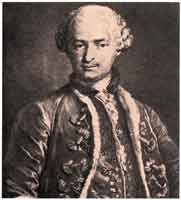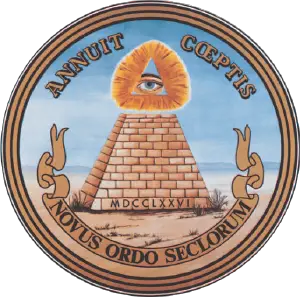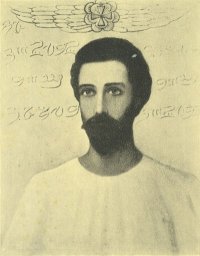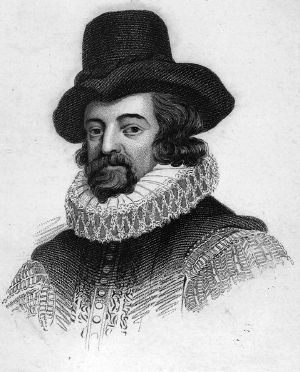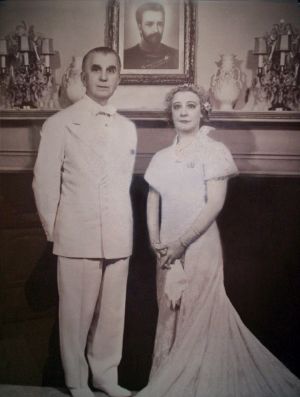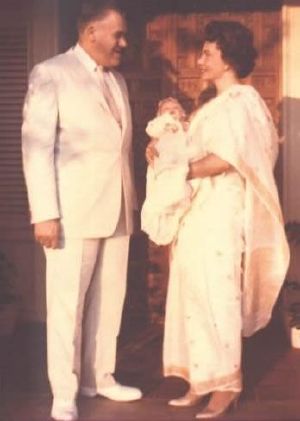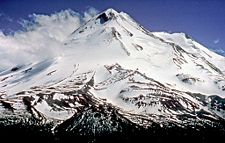The Count of Saint Germain (c. 1710–1784) was a mysterious gentleman who appeared among the royal families of Europe in the eighteenth century, known as der Wundermann.
His varied and unique talents reportedly included chemistry, alchemy, music, and magic. He had no visible means of support, but no lack of resources either. From historical and personal reports, he has been at various times considered a prophet, a charlatan, a healer, a spy, and a visionary.
Myths and speculations about Saint Germain began to be widespread in the late nineteenth and early twentieth centuries, when he was often referenced in Theosophy. He is said by some to have been the founder of Freemasonry which inspired several of the American Founding Fathers. Others say he may have written most of the works of Shakespeare while simultaneously being the scientific genius known to history as Francis Bacon.
In several New Age movements, he is identified as the Avatar of the Age of Aquarius and is considered an Ascended Master on a par with history's greatest spiritual teachers.
Life
There are many versions of the origin, lineage, and life of The Count of Saint Germain. One describes him as the son of Francis II Rákóczi, the Prince of Transylvania, by Rákóczi's first wife. [1] Another identifies him as the illegitimate son of Maria Anna of Pfalz-Neuburg, the widow of Charles II of Spain. Still another account describes him as the illegitimate son of the king of Portugal (presumably John V) by a Jewish mother.
Such conflicting reports have yet to be reconciled or completely dismissed, and all that can be said about Saint Germain for certain in regard to his actual birth, childhood and death—as well as much of his life—is that the evidence is based mostly on anecdotes and legendary accounts.
Adding to the confusion is the fact that there were several historical men of eighteenth century Europe with the surname of St. Germain. It is possible that he was a friend of Rousseau known as Claude Anglancier de St. Germain. Another prominent St. Germain was Count Claude-Louis de St. Germain, a French general who also served in Prussia and Denmark. Also notable were Pierre-Renault de St. Germain, French governor of Calcutta in the 1750s, and Robert-François Quesnay de St. Germain, active in several secret societies. Stories of the Count in India and at Masonic meetings can probably be traced to them. According to some sources, especially those who believe him to have been of Transylvanian Rákóczi nobility, Saint Germain was not familial, but was invented by him as a French version of the Latin Sanctus Germanus, meaning "Holy Brother."[2]
Saint Germain and the New Age
Several contemporary groups in esoteric and New Age traditions honor Saint Germain as a Christ-like Ascended Master with paranormal powers such as the ability to teleport, levitate, walk through walls, and influence people telepathically. During his life, he reportedly removed flaws from precious stones and created an elixir that prevented aging. He was ambidextrous and could compose simultaneously a letter with one hand and poetry with the other, or two identical pieces of writing with each hand.
The Masons and Rosicrucians credit him with inspiring the Founding Fathers to draft the United States Declaration of Independence and the Constitution, as well as providing the design of the Great Seal of the United States. [3] In New Age beliefs, Saint Germain is regarded as the "Cosmic Master of the Seventh Ray," thus governing one of the seven metaphysical principles that rule both individual souls and the unfolding of each Astrological Age. He is associated with the color violet, the jewel amethyst, and the Maltese cross. Since, according to Theosophy, the next Astrological Age—the Age of Aquarius—will be governed by the Seventh Ray (the Ray of Ceremonial Order), Saint Germain is sometimes called "The Avatar of the Age of Aquarius" whose current 2150 year cycle began in the mid-twentieth century.
Alter egos and incarnations
Saint Germain is believed to have adopted numerous "alter egos," as well as numerous incarnations, including some of history's greatest geniuses. There have been reports that he was immortal, an alchemist who had discovered the "Elixir of Life", and a prophet with mystical powers. There are sketchy accounts of his visits with Marie Antoinette and her intimate friend, Madame d'Adhémar, noting his prophetic abilities, and warning of the coming French Revolution, including the impending death of the king and queen.
Several groups believe that Saint Germain was also Francis Bacon. In that "life," he is seen as the author of the plays and poems of William Shakespeare, as well as of a code concealed within Shakespeare's works (and others) that reveals explosive secrets dealing with murder, scandal, corruption and lies at the highest levels.
One particular account describes how he made it appear that he, as Francis Bacon, died on Easter Sunday, April 9, 1626, and then proceeded to attend his own funeral in disguise. He then purportedly traveled secretly to Transylvania. It is claimed that he had incarnated in that area a number of times in previous lifetimes and felt particularly at home there. Finally on May 1, 1684 he is believed to have attained his physical Ascension, without death.
Not wanting to leave humanity without his direct visible assistance, Saint Germain then asked the Karmic Board for a special dispensation to allow him to function in a physical tangible body among embodied mankind for a limited time period—even though he was already an Ascended Master. He was granted his request at the direct intercession of the Goddess of Liberty, and reappeared as "Le Comte de Saint Germain," the "Wonderman of Europe" in the eighteenth and nineteenth centuries.
Certain Theosophists claimed to have met Saint Germain, including Annie Besant, and said to have encountered the Count in 1896. Charles Webster Leadbeater claimed to have met him in Rome in 1926. In Leadbeater's 1925 book, The Masters and the Path, Saint Germain is called both the "Comte de St. Germain" and the "Master Rakoczi." Leadbeater said that Saint Germain showed him a robe that had been previously owned by a Roman emperor and that Saint Germain told him that one of his residences was a castle in Transylvania. [4]
In Rosicrucian Max Heindel's writings, the Count of Saint Germain is described as one of the later incarnations of Christian Rosenkreuz, an enigmatic individual born in the fourteenth century and legendary founder of the Rosicrucian Order. According to this author, Rosenkreuz had been Lazarus in a previous life, a biblical character in the New Testament, and Hiram Abiff, the master of the construction of King Solomon's Temple of Freemasonry, in an earlier existence.[5]
In Alice A. Bailey's books, Saint Germain is referred to as the "Master Rakoczi" or the "Master R." His title is said to be the "Lord of Civilization," telepathically influencing people who are seen by him as being instrumental in bringing about the new civilization of the Age of Aquarius. Bailey has said that "sometime after AD 2025" Jesus, Master Rakoczi, and the others in the Spiritual Hierarchy (except Gautama Buddha) would "externalise," i.e., descend from the spiritual worlds, and live physically on Earth in ashrams surrounded by their disciples. Saint Germain, according to Bailey, is the Master of the Seventh Ray, and thus the Avatar of the New Age.
Guy Ballard, founder of the "I AM" Activity, claimed that he met Saint Germain on Mount Shasta in California in August of 1930, and that this initiated his training and experiences with other Ascended Masters in various parts of the physical and spiritual worlds. [6] The Ballards also published a portrait quite unlike the historical one that featured a dark, bearded, Christ-like figure. It was soon replaced with a blonder, more Californian version.
Colombian esoteric writer Samael Aun Weor considered an Immortal, someone who, using the art of Alchemy, has overcome death. He also identifies Saint Germain with Master Rakoczy, Roger Bacon, and Francis Bacon, claiming that he is still alive and living in Tibet with the same youthful physical body he possessed in the medieval period.
In 1957, at age 18, while involved in "I AM" Activity, the young Elizabeth Claire Prophet had an experience with Saint Germain that changed her life. She reportedly opened a book to a picture of Saint Germain and recognized him as "the oldest friend I had ever known." Shortly thereafter she met Mark L. Prophet who became her teacher, then husband. Together they wrote more than 75 books on the Teachings of the Ascended Masters, identifying Saint Germain as one of the three most prominent of them. The other two are El Morya, and Jesus. The Prophet couple taught that Saint Germain is to the "Age of Aquarius" what Jesus was to the "Age of Pisces." After Mark Prophet's death, Elizabeth would go on to found the Church Universal and Triumphant, which attracted thousands of followers in the 1970s and early 1980s, with Saint Germain as a central figure.
Who was Saint Germain?
Perhaps more controversial than anything else about the Count of Saint Germain are the accounts of his appearances at various times in history, his so-called past lives. For those occult and religious traditions accepting the concept of reincarnation this is surely no leap of faith. For those not having such pretext or cultural and religious context, it turns the entire life of Saint Germain into fantasy, pure speculation, fabrication, or quite simply, blasphemy.
According to several of the twentieth-century New Age groups mentioned above, Saint Germain was embodied as the following, among others:
- The ruler of a Golden Age civilization in the area of the Sahara Desert 70,000 years ago
- The High priest of Atlantis 13,000 years ago, serving in the Order of Lord Zadkiel in the Temple of Purification, located near where the island of Cuba is now
- The prophet Samuel, (eleventh century B.C.E.), who served as prophet, priest, and the last and greatest of the Hebrew judges
- Hesiod, Greek poet whose writings serve as a major source of knowledge for Greek mythology and cosmology (circa 700 B.C.E.)
- Plato, the great philosopher of Athens. (427 - 347 B.C.E.)
- Saint Joseph, of Nazareth. Husband of Mary and Guardian of Jesus, first century C.E.
- Saint Alban, late third or early fourth century, the first British martyr
- Proclus, c. 410 - 485 C.E. Athens. The last major Greek Neoplatonic philosopher
- Merlin, c. fifth or sixth century, Britain. Magician and counselor at King Arthur's Camelot who inspired the establishment of the Order of the Knights of the Round Table
- Roger Bacon, c. 1220–1292 C.E., England. Forerunner of modern science renowned for his exhaustive investigations into alchemy, optics, mathematics, and languages
- Organizer of various Secret Societies in Germany in the late fourteenth and early fifteenth centuries, where he operated as the legendary Christian Rosenkreuz
- Christopher Columbus, 1451–1506 C.E.
- Francis Bacon, 1561–1626, England. Philosopher, statesman, essayist and literary master, author of the Shakespearean plays, father of inductive science and herald of the scientific revolution.
Legacy
The legacy of The Count of Saint Germain remains within the mystical and esoteric appeal of his life as well as in his teachings contained within the various purportedly "channeled" materials available. Who was he? Where did he come from? It appears that most of the details of his physical life itself are unknown or at least incomplete. However, his reported goal or vision of enshrining the "violet flame" or fleur-de-lis as the threefold flame of God-identity in every heart, attributed to him by various authors and channelers, continues to inspire millions of adherents of New Age religion.
Notes
- ↑ Isabel Cooper-Oakley, Count of St. Germain (Garber Communications, 1988, ISBN 978-0893452391).
- ↑ Werner Schroeder, Ascended Masters and Their Retreats (Ascended Master Teaching Foundation, 2004), 250-255.
- ↑ Manly P. Hall, (original 1928) The Secret Teachings of All Ages (Murine Press, 2005).
- ↑ C. W. Leadbeater The Masters and the Path (Adyar, India: Theosophical Publishing House, 1996).
- ↑ Max Heindel, "Freemasonry and Catholocism" Retrieved March 10, 2008.
- ↑ Godfre Ray King, Unveiled Mysteries (Kessinger Publishing, 2007).
ReferencesISBN links support NWE through referral fees
- Bailey, Alice. The externalization of hierarchy. New York: Lucis, 1957. OCLC 41738369
- Bernard, Raymond. Great Secret Count St. Germain. Mokelumne Hill Press, 1993. ISBN 0787300950
- Chacornac, Paul. El Conde de Saint Germain. Editorial Sirio, 2001. ISBN 978-8478082124
- Cooper-Oakley, Isabel. Count of St. Germain. Garber Communications, 1988. ISBN 978-0893452391 (transl. from The Comte de St. Germain. Milan, Italy: Ars Regia, 1912)
- Fuller, Jean Overton. The Comte de Saint-Germain: Last Scion of the House of Rakoczy. East-West Publications, 1988. ISBN 978-0856921148
- Hall, Manly P. "The Secret Teachings of All Ages." An Encyclopedic Outline of Masonic, Hermetic, Qabbalistic and Rosicrucian Symbolical Philosophy Being an Interpretation of the Secret Teachings Concealed within the Rituals, Allegories and Mysteries of all Ages. Murine Press, 2005. ISBN 978-0975309346
- Heindel, Max. Freemasonry and Catholicism. Rosicrucian Fellowship, 1996. ISBN 0911274049. Retrieved May 5, 2020.
- King, Godfre Ray. Unveiled Mysteries. Kessinger Publishing, 2007. ISBN 1432501690
- King, Godfre Ray. The Magic Presence. St. Germain Press, 1999. ISBN 978-1878891075
- Leadbeater, C.W. The Masters and the Path. Adyar, India: Theosophical Publishing House, 2007 (original 1925). ISBN 978-1602063334
- Prophet, Elizabeth Clare. Inner perspectives: Teachings of the Ascended Masters. Summit Lighthouse Library, 2001. ISBN 978-0922729760
- Prophet, Elizabeth Clare. Saint Germain: Master Alchemist. Summit University Press, 2004. ISBN 978-0922729951
- Prophet, Elizabeth Clare. Saint Germain's Prophecy for the New Millennium. Summit University Press, 1999. ISBN 978-0922729456
- Prophet, Elizabeth Clare. Violet Flame to Heal Body, Mind and Soul. Summit University Press, 1998. ISBN 978-0922729371
- Prophet, Mark L. Meeting the Masters: Teachings of the Ascended Masters. Summit University Press, 2003. ISBN 978-0922729852
- Saint Germain (channeled). Saint Germain on Alchemy: Formulas for Self-Transformation. Summit University Press, 1988. ISBN 978-0916766689
- Saint Germain (channeled). The Most Holy Trinosophia. Philosophical Research Society, 1983. ISBN 978-0893144173
- Schroeder, Werner. Ascended Masters and Their Retreats. Ascended Master Teaching Foundation, 2004. ASIN B00H3RNQO0
External links
All links retrieved January 10, 2024.
- Comte Saint Germain. themediadesk.com.
- Isabel Cooper-Oakley [1912] The Comte de St. Germain. www.sacred-texts.com.
- The Saint Germain Foundation. www.saintgermainfoundation.org.
- "Count of St Germain: the Mysterious Rosicrucian, who was the Father of the American Republic" — Chapter Eleven from Great Secret: Count St. Germain by Raymond Bernard. www.reversespins.com.
- Saint Germain. www.ascension-research.org.
- Masonic Work and Austrian Traditions: St. Germain and Mesmer. www.sacred-texts.com.
- Masonic Tradition. www.sacred-texts.com.
Credits
New World Encyclopedia writers and editors rewrote and completed the Wikipedia article in accordance with New World Encyclopedia standards. This article abides by terms of the Creative Commons CC-by-sa 3.0 License (CC-by-sa), which may be used and disseminated with proper attribution. Credit is due under the terms of this license that can reference both the New World Encyclopedia contributors and the selfless volunteer contributors of the Wikimedia Foundation. To cite this article click here for a list of acceptable citing formats.The history of earlier contributions by wikipedians is accessible to researchers here:
The history of this article since it was imported to New World Encyclopedia:
Note: Some restrictions may apply to use of individual images which are separately licensed.
